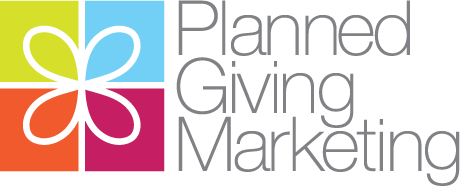
4.5 Ways Prospect Research Can Help You Market Planned Gifts
A Guest Post by Sarah Tedesco
This blog focuses on our primary business, planned giving marketing. But to diversify our subject matter and help fundraisers, we like to feature the work of our friends and colleagues in the community.
Please join me in welcoming today’s guest author, Sarah Tedesco. Sarah is the Executive Vice President of DonorSearch, a prospect research and wealth screening company that focuses on proven philanthropy.
We hope you enjoy this post on prospect research and marketing planned gifts.
What’s the “0.5”?
This article should probably start by explaining where the half of an idea comes from. The answer is simple. Prospect research is invaluable. Prospect research helps organizations identify planned giving prospects. Research provides the necessary data to determine if a prospect is a qualified lead.
This data includes:
• Giving history
• Financial situation
• Age
• Familial ties
• Connection to your cause
• And much more
So what’s the 1/2? It’s the process of finding planned giving prospects. It’s the mysterious half.
Identifying prospects isn’t really part of marketing. Good marketing helps prospects identify themselves.
All the research in the world won’t be able to make connections with your planned giving prospects if you don’t listen while you build the relationship. Listen as they reveal the “mysterious moment” that made them want to deepen the relationship. But some research isn’t mysterious. And each of these research-enabled tips will help customize your planned giving marketing to better connect with your prospects.
1. Using Prospect Research for Reaching Donors
When a supporter of your cause decides to leave a planned gift, there’s a strong likelihood the donor has already built a relationship with your organization. Since most planned giving donors have a history with your nonprofit, you should have plenty of pre-existing data on the prospect, including communication history. If you don’t, a prospect screening can complete any missing information. You want to be able to communicate with donors about planned giving as much as you can through:
• Email
• Direct mail
• Calls
• And so on
After a series of communications, you can then take the details of the prospect research and use that data to track your performance, making adjustments for next time.
2. Prospect Research for Educating and Opening Opportunity
You’ll also want to keep in mind that planned giving communications can most often take two paths:
- Educating potential donors about making a planned gift.
- Giving donors the opportunity to let your organization know that they have included you in their wills.
Obviously, leaving a planned gift is not a decision that is made lightly. Interested parties are likely to have questions. To get the process started, communicate as many times as you can afford.
Remember that regular communication is key. Very few donors will make such a significant decision after one interaction.
3. Prospect Research to Facilitate Introductions
What’s your marketing strategy if you don’t have a strong relationship with your planned giving prospect? Use your prospect research to reveal any underlying connections your organization or friends of your organization have with the prospect. For example, it’s quite common for a board member to have a relationship with a planned giving prospect. If that’s the case, include your mutual contact in the marketing and cultivation process. The average planned gift is between $35,000 and $70,000. A prospect, no matter how wealthy, has to trust and feel comfortable with an organization to gift that amount of money. Leverage a personal connection to open the conversation. This trust always helps.
4. Fixing Errors and Revealing a Prospect’s History
The better your data is, the better your communications will be. A prospect screening will fill in any gaps in your donor data and correct errors. As a strategy, there’s nothing worse than a nonprofit marketing campaign that only asks for gifts. You have to thank more than you ask. Don’t lead off with an ask. Instead, begin with a sincere thank you. To truly emphasize your gratitude, keep your acknowledgments specific using the information revealed from a prospect screening. You could acknowledge:
• Past gifts
• Volunteer participation
• Event attendance
• Workplace giving submissions (like matching gift and volunteer grant requests)
As I’m sure you can see, there’s a principle threaded through all of these points. Getting to know your prospects better, no matter what you’re learning, helps your marketing.
Ready to Improve Your Marketing?
With prospect research in your corner, you can customize and personalize your planned giving marketing materials and reach your fundraising goals. Give us a call for help with prospect research and creating an effective and personalized planned giving marketing strategy.
